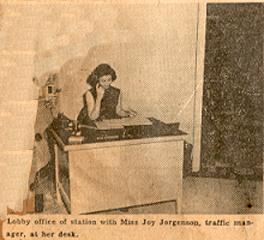The Working World
Women in the job force of
the 1950's
In the late 1940s and
through to the 1960s women's roles in
the work place changed dramatically.
During WWII, women were needed to work in factories, doing jobs
traditionally assigned to men. As men
began to return from their posts in Europe and the South Pacific, as
stated
previously, it was anticipated that women would return to the home to
run that
sector of normal life, as traditions from the past would dictate. Some women did stay in the work place though,
and were accepted for doing this. This
was not in anyway a change in ideals of North American society, the
jobs in
which women were allowed to work were few and again, very stereotypical. By creating this structure of women's work
roles
following the same misconceptions of the “weaker sex” and her
abilities, women
in the workforce continued to rebuild the normalcy so desired after the
war,
and at eh onset of the Cold War in the fifties and sixties.
Women who wished to work
had two acceptable choices, stay at
home and do her idealized role, or go to a feminized position that
would not be
“challenging” to that of the dainty woman.
“. . . Prevailing cultural attitudes left working-class wives
with two
jobs; worker and homemaker. Household
appliances to store and prepare food, to clean clothes and houses, or
to divert
children's attention all became necessities, not as labor-saving
devices but as a means of getting women to do two jobs
for the pay of less than one.”13
Many young, unmarried women sought jobs because they had no family to
take care
of yet. Work was seen as “bidding time”
until that dream husband came along and she cold rightfully take up the
role of
wife. “Marriages where the wife continues to work for any length of
time are
much more liable to end in disaster than those where a normal course is
followed.”14
Is the advice offered to men to ensure their new marriage being a
lasting and
happy one.
The Bright Young Newcomer
Women workers have to learn to adjust from "typical" women's jealousy, to work together in an office.
I Want to be a Secretary
Young girls must learn what it take to be a secretary.
Supervising Women Workers
Helping managers deal with the added trouble that women workers present.
History and Film 200
Fall 2004


